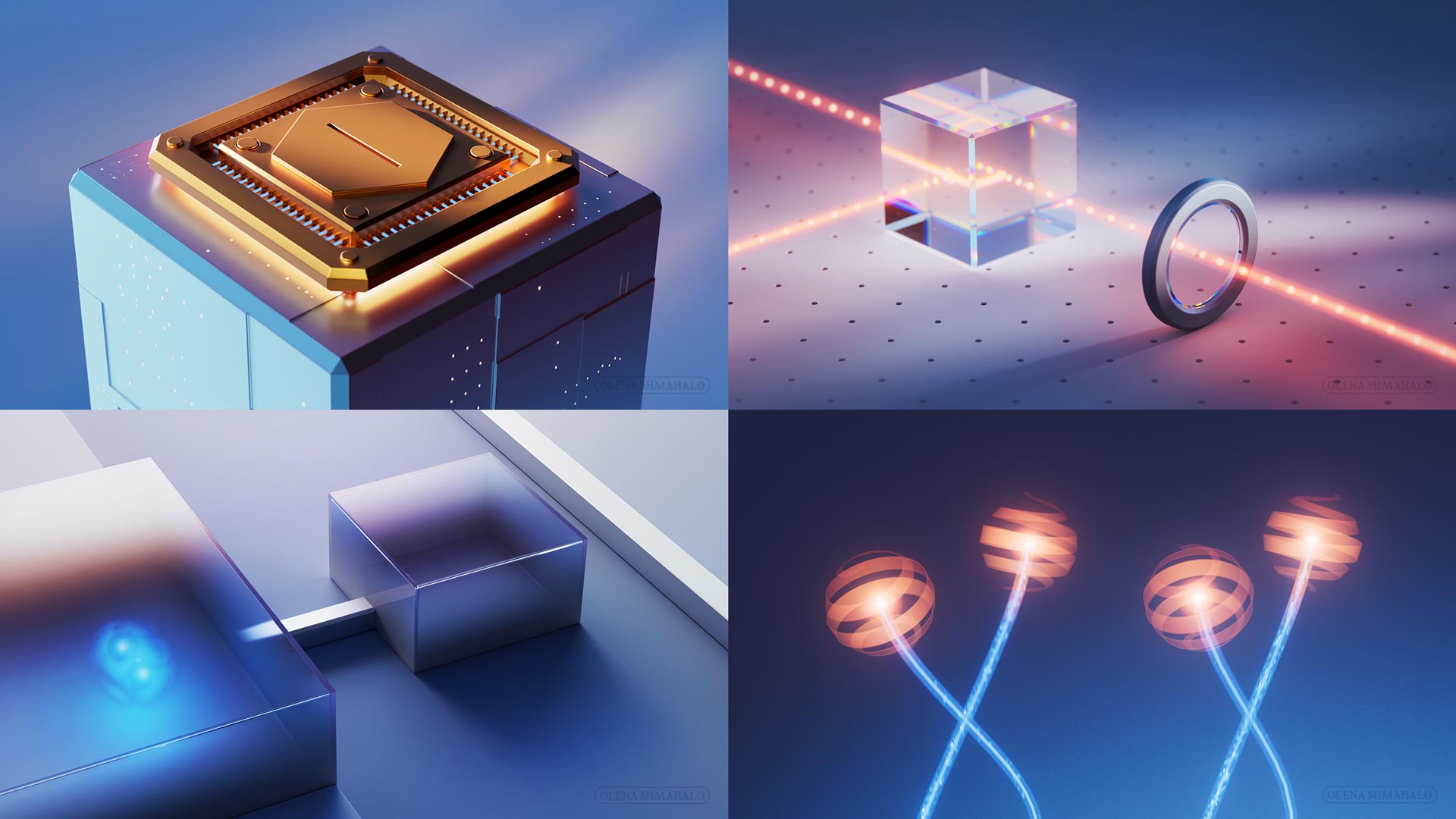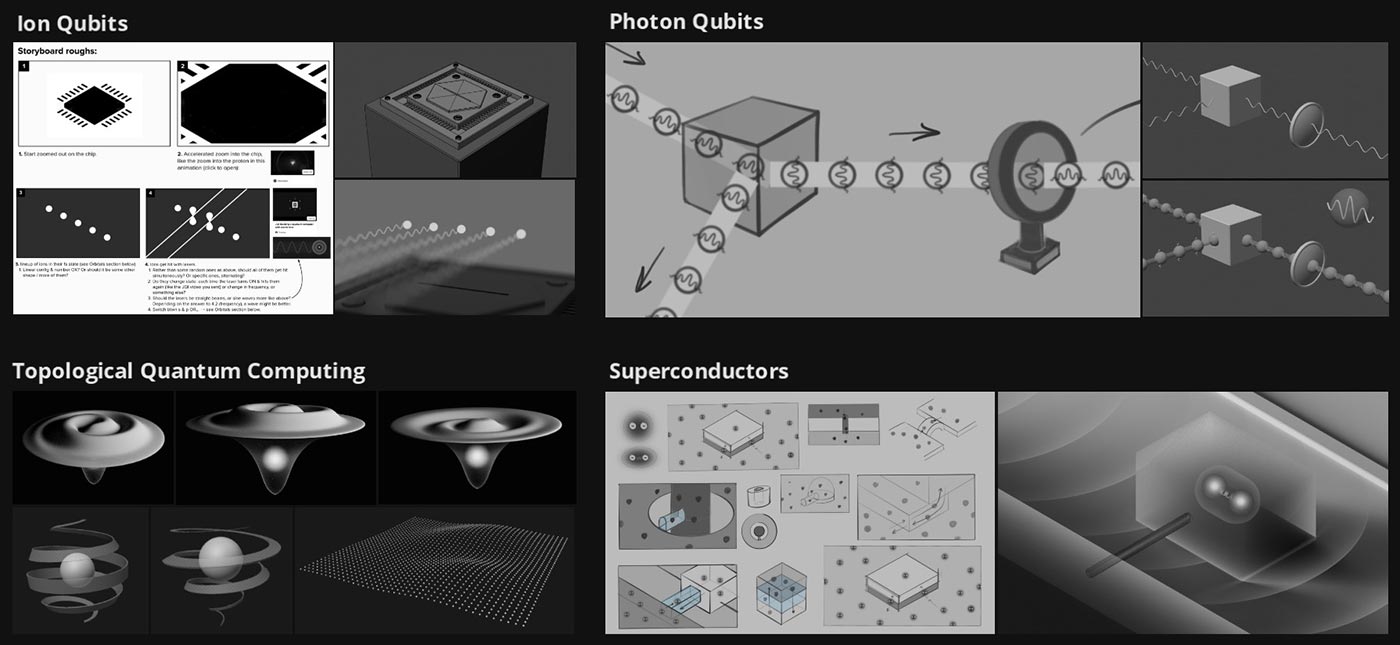The Quantum Atlas
3D Animated Science Illustration • UMD • 2022-24
FOR
UMD; thanks to Emily Edwards & Chris Cesare
WORK
Art direction, design, 3D modeling & animation
TOOLS
Cinema 4D, Redshift, X-Particles
INFO
I worked closely with the team at the University of Maryland to create a series of short videos illustrating aspects of physical systems including ion and photon qubits, superconductivity, and quasiparticles in topological quantum computing. The videos accompany entries on The Quantum Atlas: a web-based guide intended to demystify quantum physics.
Watch all of the videos below:
"A qubit can be made from two internal energy levels of a charged atom, or ion, depicted here as different atomic orbitals. Metal electrodes, shown here as a gold chip, can trap multiple ions in a chain. Laser beams zap the ions to perform computational operations. In the simplest operation, a laser switches the ion qubit from the lower energy state (sphere) to a higher energy state (four-leaf clover)." (Caption via The Quantum Atlas)
"A qubit made from photons lives in the polarization property of light. This is depicted here as individual glowing wavelets. Coated pieces of glass, such as the cube shown in the video, can separate out different polarization states of light. Other elements can switch the polarization from one state (vertical) to the other (horizontal). Photon qubits can also live in other properties, such as color." (Caption via The Quantum Atlas)
"One way to make a qubit out of superconductors is to fabricate a small island of superconducting material and count the extra electric charge sitting on it. There will be a baseline amount of charge on the island that minimizes energy, and adding any extra charge will raise the energy. The low-energy state and the higher-energy state can form a qubit, and the two states can be manipulated with microwaves (shown here as a white pulse). In superconductors, electrons team up into composite particles called Cooper pairs (depicted here as a cloud with two orbs), so the difference between the low-energy state and the higher-energy state is really two extra charges." (Caption via The Quantum Atlas)
Topological Quantum Computing
This scene demonstrates anyons (stylized as spherical vortices) "braiding" around one another: a key method of achieving topological quantum computations.
(Quantum Atlas link and info coming soon.)
© Olena Shmahalo

